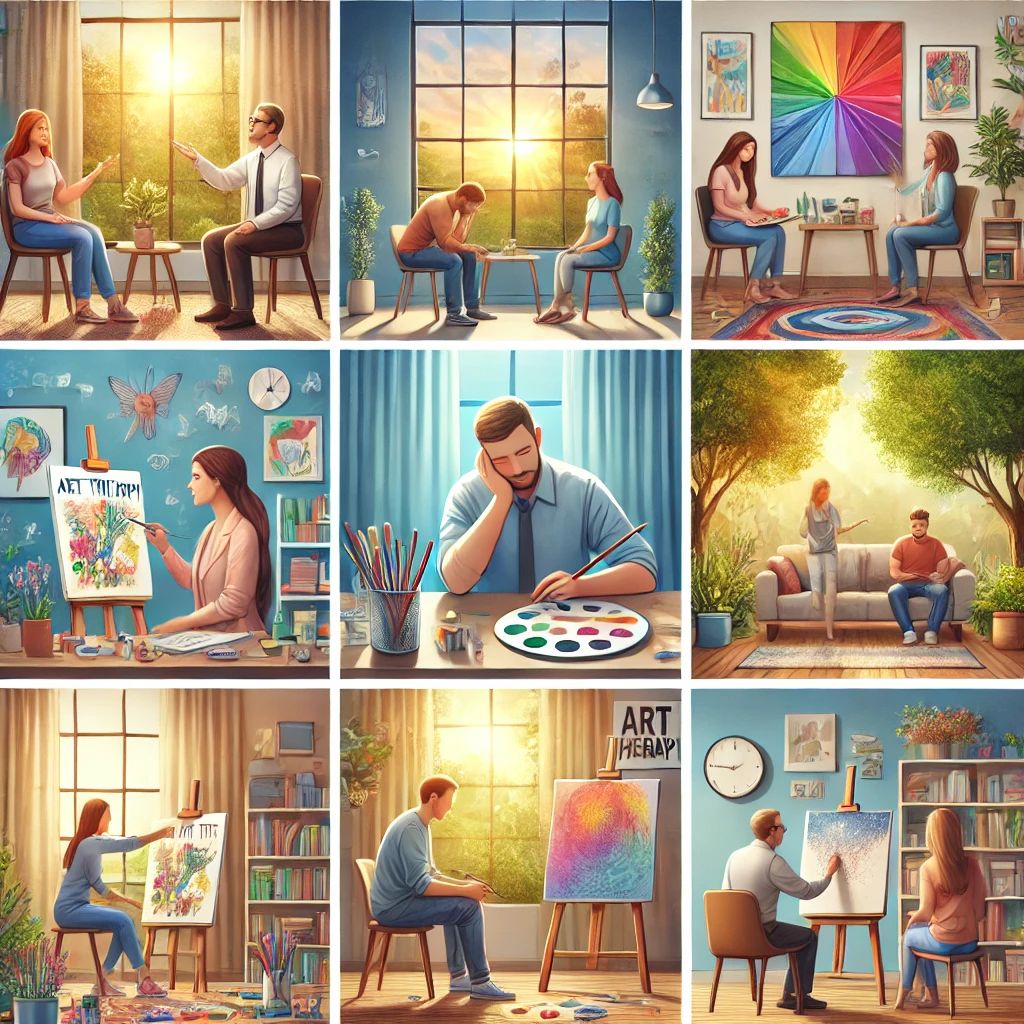
In the realm of psychological well-being, art therapy has emerged as a powerful and transformative practice. Combining the creative process with therapeutic techniques, art therapy offers a unique pathway to healing and self-discovery. It allows individuals to express emotions, explore their inner worlds, and find solace in the act of creation. Let's delve into the role of art therapy in mental well-being and how it can positively impact our lives.
Understanding Art Therapy
Art therapy is a form of psychotherapy that uses artistic creation as a means of communication and expression. Unlike traditional talk therapy, it leverages the creative process to help individuals explore emotions, resolve conflicts, and develop self-awareness. Guided by a trained art therapist, individuals engage in various art forms, such as painting, drawing, sculpture, and collage, to articulate feelings that might be difficult to express with words alone.
Expression Without Words: One of the core strengths of art therapy is its ability to bypass verbal limitations. For those who find it challenging to articulate their thoughts and emotions, art becomes a powerful medium for expression.
Creative Exploration: Through the creative process, individuals can explore their inner landscapes. This exploration often leads to insights and a deeper understanding of oneself, fostering personal growth and healing.
The Benefits of Art Therapy
Art therapy offers a multitude of benefits that contribute to mental well-being. These benefits span emotional, cognitive, and social domains, providing a holistic approach to mental health.
Emotional Release: Engaging in artistic activities allows for the release of pent-up emotions. Whether it's anger, sadness, or frustration, the act of creating can be cathartic and liberating.
Stress Reduction: The immersive nature of art-making can induce a state of flow, where time seems to stand still. This flow state is associated with reduced stress and increased relaxation.
Enhanced Self-Awareness: Art therapy encourages self-reflection and introspection. By examining their creations, individuals can gain insights into their thoughts, feelings, and behaviors, leading to greater self-awareness.
Improved Mood: Creating art can boost mood and increase feelings of joy and satisfaction. The sense of accomplishment from completing an artwork contributes to positive emotions.
Cognitive Benefits: Art therapy can enhance cognitive functions such as problem-solving, critical thinking, and concentration. It stimulates the brain and encourages creative thinking.
Social Connection: Group art therapy sessions foster a sense of community and connection. Sharing artistic experiences with others can reduce feelings of isolation and build supportive relationships.
Practical Applications of Art Therapy
Art therapy is versatile and can be tailored to meet the needs of diverse populations. It is used in various settings, including hospitals, schools, rehabilitation centers, and private practices.
In Clinical Settings: Art therapy is often used in clinical settings to support individuals with mental health conditions such as depression, anxiety, PTSD, and eating disorders. It complements traditional therapeutic approaches and provides an additional avenue for healing.
In Schools: Art therapy in schools can support students' emotional and social development. It helps children express themselves, build self-esteem, and navigate challenges such as bullying or academic stress.
In Rehabilitation: For individuals recovering from addiction or trauma, art therapy offers a constructive outlet for processing experiences and emotions. It aids in rebuilding a sense of identity and purpose.
For Caregivers: Caregivers often experience high levels of stress and burnout. Art therapy provides them with a means of self-care, helping them manage their emotions and maintain their well-being.
How to Get Started with Art Therapy
For those interested in exploring art therapy, there are several steps to get started. Whether working with a professional art therapist or engaging in self-guided practices, the journey can be deeply rewarding.
Finding a Therapist: Seek out a licensed art therapist who has specialized training and experience. Professional organizations such as the American Art Therapy Association (AATA) can provide directories of qualified therapists.
Creating a Safe Space: If you prefer to explore art therapy on your own, create a safe and comfortable space for your artistic activities. Ensure you have the necessary materials, such as paints, brushes, paper, and clay.
Setting Intentions: Before starting your art session, set an intention or goal. This could be to explore a specific emotion, relax, or simply enjoy the creative process.
Letting Go of Judgment: Embrace the creative process without worrying about the outcome. Art therapy is about expression and exploration, not artistic skill or perfection.
Reflecting on Your Work: After completing your artwork, take time to reflect on it. Consider what emotions and thoughts arose during the process and what the artwork might reveal about your inner experiences.
The Long-Term Impact of Art Therapy
Engaging in art therapy can have lasting positive effects on mental well-being. Over time, individuals often experience increased emotional resilience, better coping skills, and a greater sense of self-worth.
Emotional Resilience: Regularly expressing and processing emotions through art strengthens emotional resilience. Individuals become more adept at navigating life's challenges and managing stress.
Coping Skills: Art therapy equips individuals with healthy coping mechanisms. The creative process becomes a tool for managing difficult emotions and situations.
Self-Worth: Creating art fosters a sense of accomplishment and pride. This boost in self-esteem contributes to overall mental well-being and a positive self-image.
Conclusion
Art therapy is a powerful modality that enhances mental well-being through creative expression and exploration. Its benefits are wide-ranging, from emotional release and stress reduction to improved cognitive function and social connection. Whether used in clinical settings or for personal growth, art therapy provides a unique and effective pathway to healing and self-discovery. Embrace the transformative power of art therapy and discover how the simple act of creation can lead to profound improvements in your mental and emotional health.


